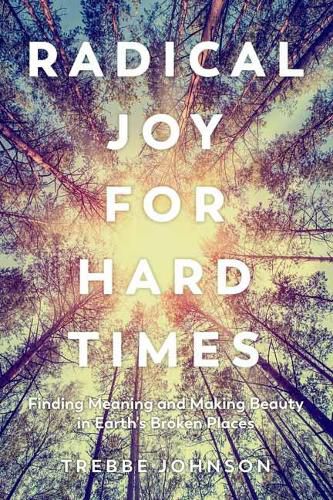Readings Newsletter
Become a Readings Member to make your shopping experience even easier.
Sign in or sign up for free!
You’re not far away from qualifying for FREE standard shipping within Australia
You’ve qualified for FREE standard shipping within Australia
The cart is loading…






When the latest environmental devastation–a clearcut forest, a mountaintop mining site–breaks your heart, this book provides ideas and inspiration to find joy, make art, and experience ritual, all told with a heartfelt journalistic style.
Trebbe Johnson gives clear ideas and suggestions for accepting places that have been wounded by human interaction, from clearcutting and frakking to extreme weather and urban sprawl. Ever had that sick feeling when you see a clearcut forest or mountain top destroyed for mining? Do you grieve for the woods or the fields you played in as a child? Often, we respond simply by abandoning these places, as if they no longer count. Or else we work so feverishly to restore them to a state somewhere between what we remember and what we long for that we fail to pay attention to how they look–and how they affect us–right now. Trebbe Johnson, after years of leading workshops, retreats, and rites of passage programs internationally, such as a retreat in an old-growth clear-cut forest, a ceremony at Ground Zero after September 11, and a walk in weapons testing grounds at Eglin Air Force Base, suggests using art and ritual to make peace with the place as it is now. She founded an organization of the same name that has an annual Global Earth Exchange Day, where communities come together in a local place that has been wounded by toxicity, greed, or simply modern progress, to make art out of the trash and found objects there. The experience encourages acceptance for the place as it has become– ugly and yet beautiful in its own way. In a well-crafted narrative that includes interviews with cutting-edge thinkers and doers from around the world, she reminds us that spending time in these places, finding beauty there, discovering what they can tell us about ourselves, and making simple creative gifts for them, we can discover new sources of meaning, community, creativity, and even joy.
$9.00 standard shipping within Australia
FREE standard shipping within Australia for orders over $100.00
Express & International shipping calculated at checkout
When the latest environmental devastation–a clearcut forest, a mountaintop mining site–breaks your heart, this book provides ideas and inspiration to find joy, make art, and experience ritual, all told with a heartfelt journalistic style.
Trebbe Johnson gives clear ideas and suggestions for accepting places that have been wounded by human interaction, from clearcutting and frakking to extreme weather and urban sprawl. Ever had that sick feeling when you see a clearcut forest or mountain top destroyed for mining? Do you grieve for the woods or the fields you played in as a child? Often, we respond simply by abandoning these places, as if they no longer count. Or else we work so feverishly to restore them to a state somewhere between what we remember and what we long for that we fail to pay attention to how they look–and how they affect us–right now. Trebbe Johnson, after years of leading workshops, retreats, and rites of passage programs internationally, such as a retreat in an old-growth clear-cut forest, a ceremony at Ground Zero after September 11, and a walk in weapons testing grounds at Eglin Air Force Base, suggests using art and ritual to make peace with the place as it is now. She founded an organization of the same name that has an annual Global Earth Exchange Day, where communities come together in a local place that has been wounded by toxicity, greed, or simply modern progress, to make art out of the trash and found objects there. The experience encourages acceptance for the place as it has become– ugly and yet beautiful in its own way. In a well-crafted narrative that includes interviews with cutting-edge thinkers and doers from around the world, she reminds us that spending time in these places, finding beauty there, discovering what they can tell us about ourselves, and making simple creative gifts for them, we can discover new sources of meaning, community, creativity, and even joy.